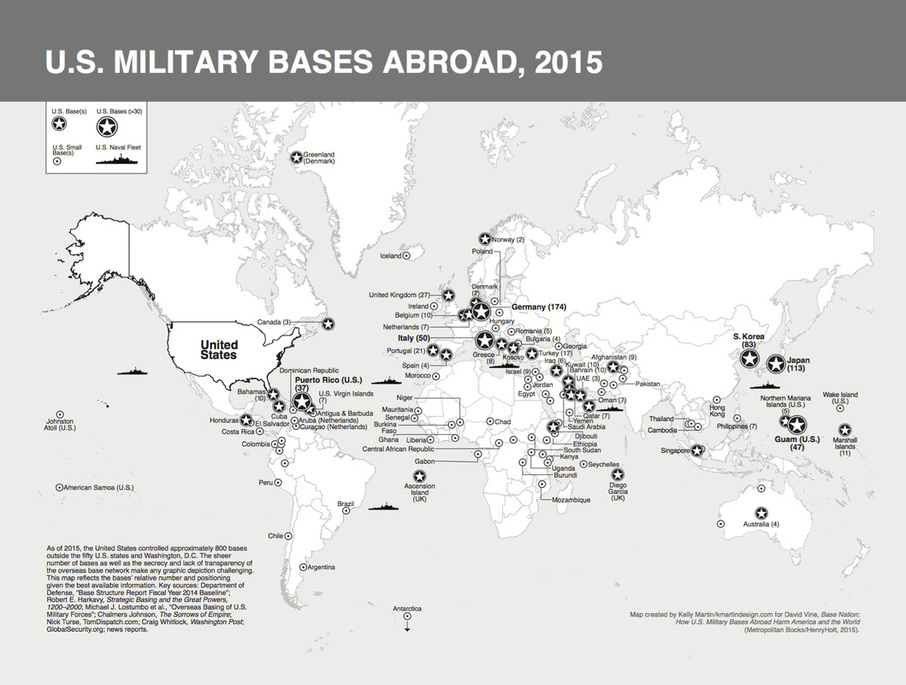
This is a map of current (as of 2015), declassified, US military bases around the world, taken from various government sources over military installations. This source has a clear anti-military bias, but the information it has pulled from is unbiased, and its portrayal on maps is clear. The most bases the US had was during WWII, with over 2000 bases, and 30000 military installations overseas, the most owned by one country in human history. Currently, the US has around 800 bases worldwide, yet the map explains the difficulty in having clear data with the US government’s secrecy regarding its military locations. The general trend seems to be a decrease in military bases since the end of WWII, and the Cold War. Still, the US maintains a clear worldwide presence in regards to its military, allowing it to intervene globally whenever necessary.

US Army soldiers in a firefight near Al Dourah, Baghdad, 2007
The book, “Proconsuls: Delegated Political-Military Leadership from Rome to America Today,” by Carnes Lord, outlines his ideas on current military leadership in the US, and interaction with foreign countries. In it, he compares America to the Roman Empire, in regards to how it conducted its foreign relations. He compares several American figures, from Leonard Wood, Military Governor of Cuba, to Ellsworth Bunker, ambassador to Vietnam, to the Roman proconsuls of ancient times. He draws comparisons by showing how various American diplomats and military leaders were given more independence by the US government to enact policies they deemed fit in the regions they looked over. Overall, this shows the historical tendency for the US to delegate power, in some ways similar to an Empire, to ambassadors and military officials as the US’ worldwide presence increased.

Map of oil pipelines in the middle east
The journal, “U.S. Imperialism, Europe, and the Middle East,” by Samir Amin, gives a broad overview to American foreign policies, and the argument that they signal imperialism. Amin makes the argument that capitalism will inadvertently lead to equality between countries, no matter what. He also analyzes the Middle East’s importance to the US, boiling it down to two factors: its oil wealth, and natural position of importance at the heart of the Old World. Through interventions in the Middle East the US continues to secure its interests, keeping large numbers of troops in the area, from Afghanistan to Iraq. Amin states that the US’ superiority stretches beyond just military might, to economic, political, and cultural domination, referring to it as a “ new collective imperialism,” that stretches beyond simple territorial acquisition. Amin ultimately brings up the fate of America’s future, questioning how long it can stay at the top, militarily, economically, and beyond.

Map of US territorial acquisitions
The book, “Dangerous Nation,” by Robert Kagan seeks to change the idea of America as an isolationist country up until the 20th century. The author starts by explaining how our nation began as a settler colony of Britain, which cemented the expansionist mindset that began the taking of native lands. Kagan states that the idea of an America that focuses domestically until it is bothered is false, and how even before our creation as a country, colonists sought to gain land from natives. He also ties our aggressive expansion to our foundation as a capitalist country, arguing that it lead to want for more resources and markets through land acquisition. In the end, Kagan argues that throughout our history we have expanded in several kinds of ways, early on territorially and commercially, and later ideologically and politically, as we continue to expand our diplomatic influence.
